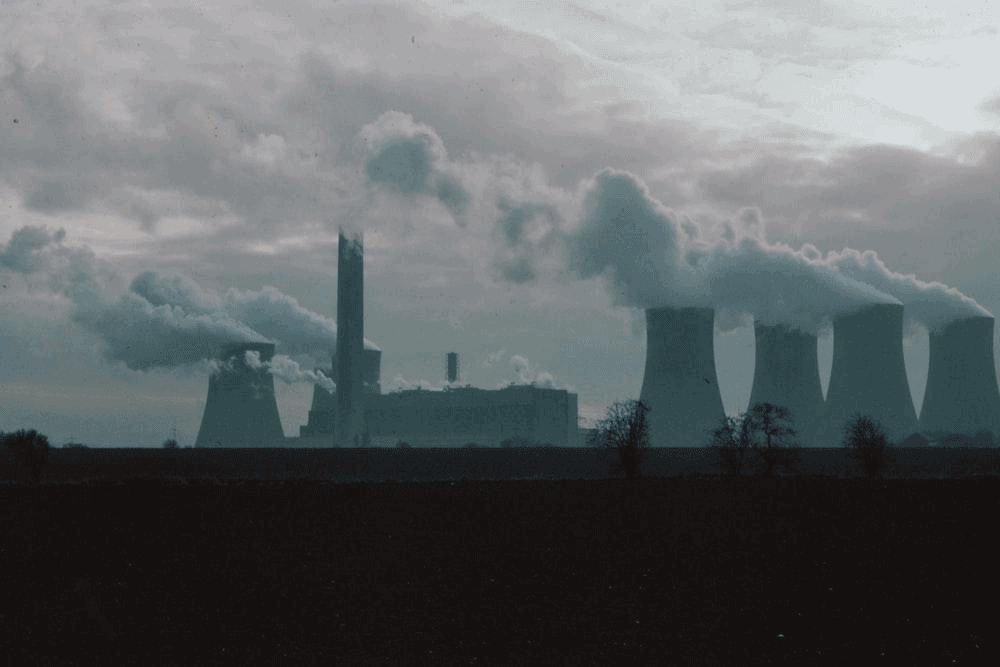Cooling towers are a type of heat exchangers that cool down the hot water when the system comes in direct contact with fresh air. It functions upon the idea of increasing the heat surface area by spraying the hot water from the nozzles; it uses water evaporation over the airflow.
The temperature rises, and the air becomes moist as the heat transfer between fresh air and hot water takes place. The damp and warm air is less dense, and hence it goes to the top of the tower and what remains at the bottom of the cooling tower is cold water. Fresh air dispenses from the bottom of the cooling tower considering the density difference between the atmospheric air outside the stack and hot air inside the natural draft cooling tower.
The process of heat removal is a part of the cooling tower’s job and keeps it from circulating in the water system. Cooling towers are typically used in oil refineries, power stations, natural gas plants and petrochemical plants.
You can further subdivide cooling towers based on the type of flow it has, and they are classified as follows:
- Natural Draft Cooling Towers
- Mechanical Draft Cooling Towers
Natural draft cooling towers
Areas of application
Natural draft cooling towers are used for application in industries and power plants that use unlimited cooling water flow.
Key features
The stack effect typically produces the airstream volume required for cooling in cooling towers. The natural draft cooling tower has an economic advantage to it; it lies in its very low electric energy requirement, and the operating costs are negligible. This makes for an economical option for high cooling loads and long periods of depreciation. The substantial distance between the air inlet and outlet of the cooling tower steers clear of any recirculation of warm air. Recirculation of warm air can possibly lead to reduced performance of your natural draft cooling tower. The design and mechanical functionality ensure minimal maintenance requirements.
The cold water temperature in comparison to cell cooling towers
The local conditions like air temperature and barometric pressure affect the cooling airflow volume coming out of the natural draft cooling towers. These cooling towers have to depend on fans and a constant air volume stream. Different local conditions create bring out different characteristics in natural draft cooling towers.
Winter operation of a natural draft cooling tower
A natural draft cooling tower’s cooling air stream volume can’t be directly controlled, which is not the case in a mechanical draft cooling tower. Since it is mostly dependent on the outside temperature and the thermal load, some of the elements that can be utilized are as follows:
Zone control – a disconnection of individual cooling zones
Winter control – the creation of an air inlet hot water curtain bypass

What is a natural draft cooling tower?
Natural draft cooling towers use the principle of convective flow when circulating air through the natural draft cooling tower. The airflow in these cooling towers is procured from their structure.
The construction costs are pretty high for these types of cooling towers, and they are only used for applications with an immense amount of constant cooling requirement that too for the long run; for example, a thermal power plant.
The natural draft cooling towers are made a little differently, and it is shaped differently for a few reasons: the amount of construction material required to make such a huge tower. The paraboloid shape of the cooling tower stimulates the flow of the air through the tower, which eventually increases the cooling tower capacity. This is also why the natural draft cooling towers are sometimes called hyperboloids.
Advantages of a natural draft cooling tower
- Low maintenance cost
- Low operational cost
- Extreme level cooling capacity
- Low noise since there are no fans in the natural draft cooling tower
- Power saving again because no fans are installed
- Low system losses


